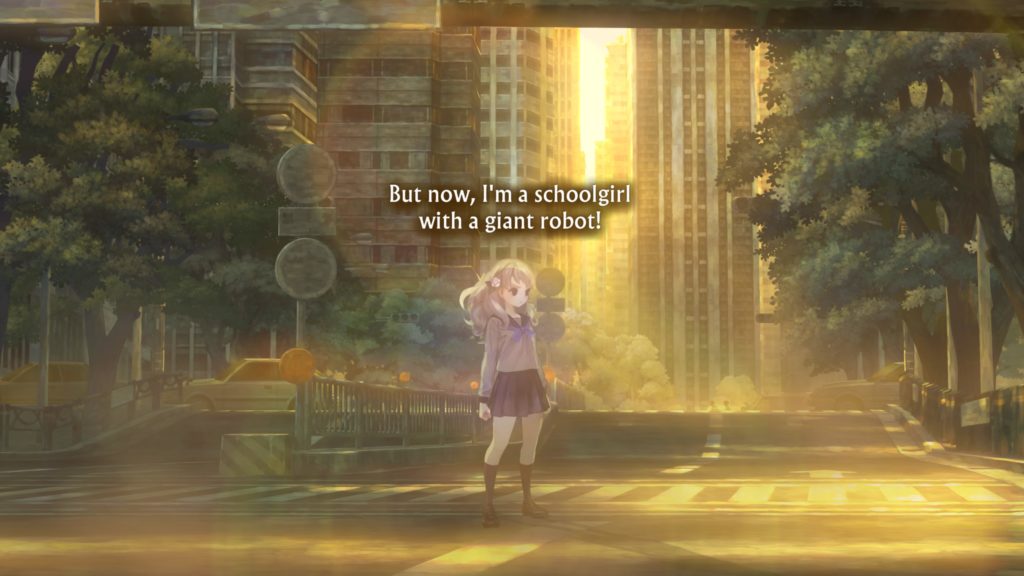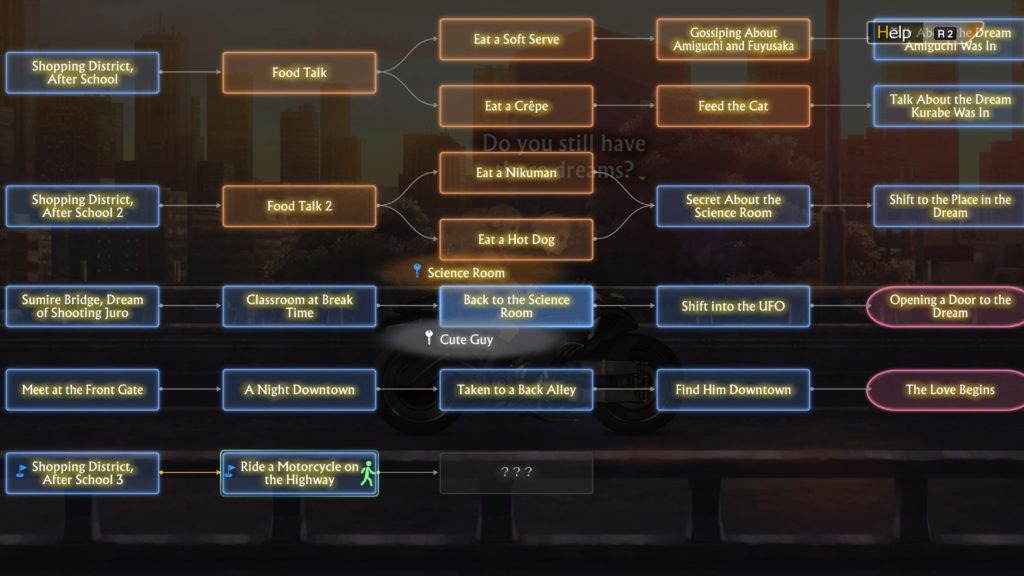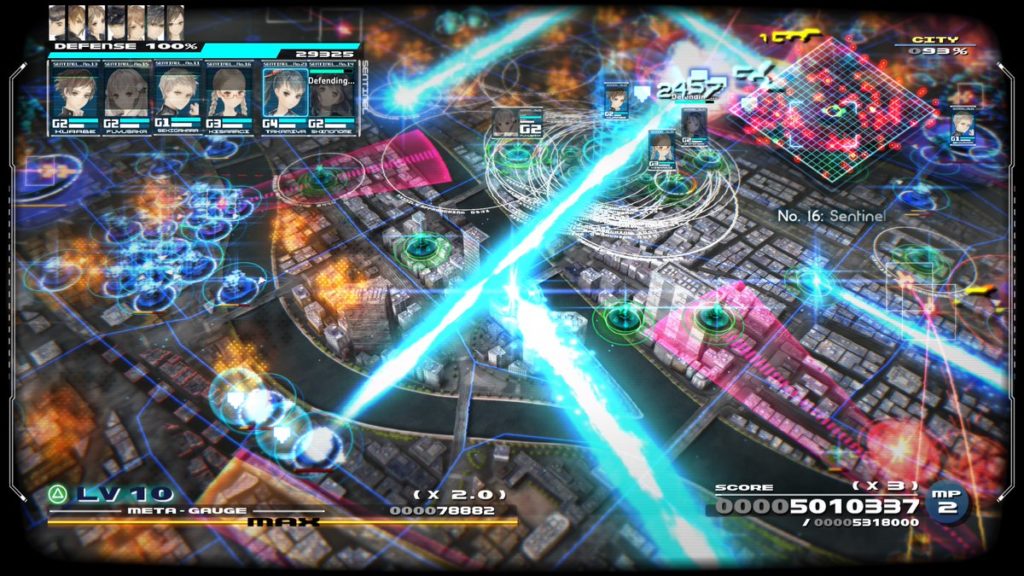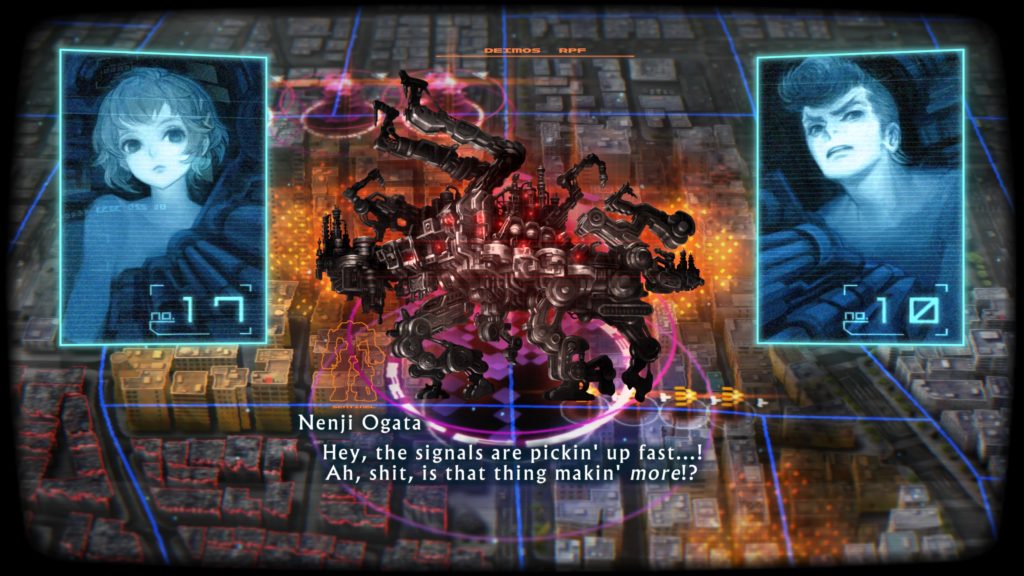- Genre: RTS
- Platform: PS4
I know it’s weird that a game by Vanillaware is a strategy instead of a side scrolling action-focused combat game. However, it oddly works really well. This one combines Vanillaware’s history of good writing and branching narrative, their very distinct art style, and an RTS combat system that combines fast action with some clever tricks straight out of JRPG combat systems into a game that is definitely niche, but something worth exploring.

The first thing to really understand is that 13 Sentinels is to some extent two separate games. Narratively speaking, there’s an entire visual novel section that goes into the back stories of the title’s 13 sentinels and how the characters all came to be together. The RTS section of the game takes place largely after the game’s core narrative, serving as a way to finish the story. While that may sound confusing, narratively it works really well.

Part of why this all works is that in order for the combat to start, things before it have to be explained, and boy do they get explained in great detail. Each of the 13 main characters has their own back story that you work through in a branching fashion. Completing branches gives some back story, but also starts to unlock the stories of other characters. You then end up revisiting a lot of these story points with the other character, seeing how they got there and where they go from there.
For a story that should have been so confusing, it ends up working in a way that somehow didn’t lose me. Reinforcing a plot point from a different point of view really reinforces remembering the core plot. It also effectively fills in information gaps throughout. The way that you jump between characters and different plot branches then ultimately ends up dropping breadcrumbs in a way that gives you enough information to infer some plot points ahead of time, but not enough to avoid some of the big surprises from catching you off guard.
This is all helped by the fact that I wanted to know more about the plot of the game. If I didn’t care about the plot, I definitely would have been lost. However, this one really hit a sci-fi slice that I really find enjoyable. Without giving away too much, you’ve got giant hilarious mecha, you’ve got time travel paradoxes, you’ve got androids and future weapons, you’ve got self-replicating robotic enemies. It’s just such a core of things that I find enjoyable that it was easy to continue to hit the button to start the next story segment and just lose track of time. Ultimately this is Vanillaware’s narrative sense working at full capacity in a way that works far better than it should.
This is all backed by the visual style that Vanillaware is known for. It’s still got a gorgeous hand-painted aesthetic with fluid animation that just continues to work so well. If you’re played Muramasa, Odin Sphere, or Dragon’s Crown, you’re familiar with it. If not, well, there’s three more games I highly recommend…

The other half of the game is all about combat. Technically speaking, it is part of the narrative, but the connections to the story really don’t start to make sense until closer to the end. Luckily, the combat is fun in a way that allowed me to get to the end, and then some.
Good RTS games outside of PC are such a rarity, and a lot of that has always come down to odd control schemes compared to your normal PC keyboard/mouse setup. Games like Final Fantasy XII: Revenant Wings have worked by replicating that control setup on a touch screen. However, 13 Sentinels goes in a different direction, and is helped along by three main things.
The first real benefit is that control is down to single units. You aren’t trying to group select a bunch of things and move them around all at once. You move one unit, you attack with one unit, you use an ability on one unit. It reduces a point of complexity down to individual decisions that allow you to quickly hop around with cycling on the d-pad, rather than having to drag select a bunch of stuff.
The second is that attacks are not point and click, at least not in the traditional sense. Every unit attack or ability has some sort of AOE capability. Basic attacks may just be first-target or narrow cones. More costly abilities things may be circular AOE or long range line attacks. However, they all originate either from the unit itself and can be set by just pressing a direction on the joystick, or they originate from a specific location in which case you’re just dragging a targeter around on screen. It’s all incredibly effective, but also incredibly intuitive to just drop into. You start an attack, you move it with left stick, and you confirm. No fuss, no fighting controls. Your focus stays on the result of the attack.
However, the third thing is probably the most impactful. While this is technically an RTS, the combat system pulls some features from ATB-style JRPGs. Namely, it brings in meter charge to start a turn, and it brings in combat pausing when it’s a unit’s turn. These two add a nice sense of control the the combat pace which plays well with the general limitations of the platform. What this ends up meaning is that the game can also throw hundreds of enemy units at you without giving you a sense of being overwhelmed.

That said, the combat does have some rough points, particularly around overall balance as the game progresses. I got to a point probably around the 60-70% point where I’d upgraded a bunch of units that can spawn turrets, and it was basically an unbeatable strategy. ALWAYS have four turret guys, then add in two random units, and I was basically going to win with some small amount of effort. As the screenshot above shows, the turrets will shoot all over the place and hit everything, and when upgraded with more range and damage they got kind of ridiculous.
It didn’t ruin my sense of enjoyment of the game, and there’s definitely something to be said about trying out different strategies just for the hell of it, but if you’re a one-and-done clearing type, there’s distinctly optimal crews to use.

All that being said, this was a hugely enjoyable game. It hit a sci-fi plot that really worked well with me. It had the Vanillaware touches that I’ve always loved in their past titles. It had a unique RTS combat system that blended in some JRPG mechanics with some clever choices around console limitations. In general, it all worked in a way that surprised me, even given the studio’s storied history.
Is it niche? Yep, it sure is. Is it worth playing anyway? Also yes.
